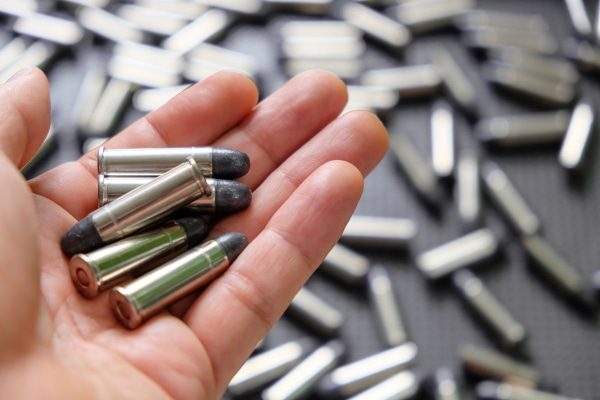In today’s world, where environmental awareness and sustainable practices are more important than ever, recycling has become a crucial component of responsible living. While most people think of recycling in terms of plastics, paper, or aluminum cans, one less-discussed yet significant material that can be recycled is ammunition or more specifically, scrap ammo.
Whether you’re a shooting enthusiast, a gun range operator, a military surplus collector, or simply someone interested in minimizing waste, understanding how to safely and responsibly recycle scrap ammo can make a major difference. This article will explore what scrap ammo is, why recycling it matters, how the recycling process works, and what individuals and businesses can do to contribute.
What Is Scrap Ammo?
“Scrap ammo” refers to any form of used, spent, defective, or surplus ammunition that is no longer functional or safe for use. This can include:
- Spent casings: The metal shell left behind after a bullet is fired.
- Live rounds that are defective: Corroded or damaged rounds unsuitable for firing.
- Bullets pulled from cartridges: Recovered bullets separated from their casings.
- Misfires or dud rounds: Ammo that fails to discharge.
- Military surplus ammunition: Often decommissioned and outdated.
While many gun enthusiasts reload their spent brass, not all ammo components are reusable, and a large portion becomes waste — unless properly recycled.
Why Recycling Scrap Ammo Matters
1. Environmental Responsibility
Spent ammo can leach heavy metals such as lead into the soil and water if disposed of improperly. This poses a major threat to wildlife and human health, especially in areas near shooting ranges or military training facilities.
Recycling helps prevent contamination and mitigates the environmental impact of heavy metal exposure. In fact, responsible ammo recycling is an important step toward cleaner shooting ranges and outdoor spaces.
2. Metal Recovery and Conservation
Ammunition is composed primarily of metals such as:
- Brass (copper and zinc alloy)
- Steel
- Lead
- Aluminum
These are all valuable and recyclable materials. Recycling helps conserve natural resources by reducing the need for virgin metal mining and processing — both of which are energy-intensive and environmentally harmful.
3. Economic Incentives
Recycling ammo components, especially brass, can be financially beneficial. Scrap brass casings are often in high demand and can be sold to recycling facilities or ammo reloading companies. For shooting ranges, this can represent a steady stream of revenue.
How Is Scrap Ammo Recycled?
Recycling ammunition isn’t as straightforward as tossing it in a blue bin. Due to the hazardous nature of certain components especially live rounds the process must be handled with strict safety protocols.
Here’s an overview of how ammo recycling generally works:
Step 1: Collection and Sorting
- Spent Casings: Casings are collected from ranges, hunting areas, or shooting events. These are separated by material type — brass, aluminum, or steel.
- Live or Defective Ammo: These require special handling and must be stored in designated containers until processed by professionals.
Step 2: Deactivation
Live rounds must be rendered inert before recycling. This typically involves:
- Demilitarization: For military or surplus ammo, this step is often done by licensed professionals who remove powder and primer.
- Soaking or Crushing: In some facilities, water or mechanical force is used to deactivate rounds safely.
Step 3: Material Separation
Once deactivated or spent, the ammo components are separated:
- Brass casings are cleaned and often sold to reloading companies or melted down for industrial reuse.
- Bullets (lead or copper) can be recycled into new projectiles or refined into other products.
- Steel and aluminum are sent to metal recycling centers for smelting and reuse.
Step 4: Refining and Repurposing
Recovered metals go through refining processes to be reused in:
- New ammunition
- Automotive parts
- Construction materials
- Consumer electronics
Common Challenges in Ammo Recycling
1. Safety Risks
Live ammo is dangerous to handle and process. A single round mistakenly mixed into scrap metal can pose a significant risk at a recycling facility. This is why licensed recyclers and proper sorting are essential.
2. Lack of Public Awareness
Many people, including responsible gun owners, are unaware that ammo can and should be recycled. Some simply throw old rounds in the trash — a potentially dangerous and illegal act in many areas.
3. Limited Access to Facilities
Not every local recycling center accepts ammo components. Specialized facilities or firearm-related businesses must often be used.
How to Recycle Scrap Ammo as an Individual
If you’re an individual looking to responsibly dispose of or recycle scrap ammo, here are some actionable steps:
1. Know What You Have
- Spent brass casings? You can likely recycle or sell these.
- Live rounds or duds? Handle with caution and never attempt to disassemble.
2. Contact Local Gun Shops or Ranges
Many gun ranges have ammo recycling programs or partnerships with recyclers. They may also accept your old ammo for safe disposal.
3. Find a Certified Recycler
Search for facilities in your area that are certified to handle ammunition, or contact your local waste authority for guidance. The Bureau of Alcohol, Tobacco, Firearms and Explosives (ATF) also provides guidance on proper ammo disposal.
4. Don’t Use the Trash
Never throw live or spent ammo into regular garbage or recycling bins. This endangers sanitation workers and can trigger legal consequences.
Ammo Recycling for Ranges and Institutions
For shooting ranges, police departments, and military facilities, recycling scrap ammo can be part of a larger sustainability program.
Benefits:
- Revenue: Selling brass casings or lead recovery can generate income.
- Cleaner Ranges: Proper disposal reduces contamination and maintenance costs.
- Regulatory Compliance: Adheres to environmental and safety regulations.
Best Practices:
- Install clearly marked collection bins for different materials.
- Train staff to identify and safely sort spent casings and live rounds.
- Partner with a reputable recycling service experienced in hazardous material handling.
- Consider lead reclamation services to recover bullets from berms and traps.
Innovations in Ammo Recycling
With advances in technology, ammunition recycling is becoming safer and more efficient.
Lead-Free Ammunition
Lead-free bullets are gaining popularity for reducing toxic residue and making recycling safer. Casings and projectiles made of copper or polymer materials offer cleaner alternatives for both the environment and recyclers.
Smart Sorting Systems
New range management technologies use magnetic sorting and AI-assisted scanning to automate the separation of brass, steel, and live rounds, minimizing the risk of accidents.
Final Thoughts: A Small Step with Big Impact
Recycling scrap ammo is not just about waste reduction it’s about taking responsibility. As environmental pressures increase and resources become more scarce, the way we handle even niche waste like ammunition has far-reaching consequences.
Whether you’re a weekend shooter or managing a large firing range, incorporating ammo recycling into your routine helps protect the environment, supports sustainability, and reduces the risks associated with improper disposal.
By making informed choices, connecting with the right resources, and spreading awareness, we can ensure that the materials we use in our hobbies or professions don’t end up polluting the world we live in.
YOU MAY ALSO READ. https://www.anytimemagazines.com/ezclasswork/




